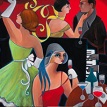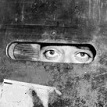I. Enactment
A. Fruition of early 1800s Temperance Movement
B. 18th Amendment & Volstead Act (1920)
1. Preceded by 26 states (Maine #1)
2. Created sudden countless criminals
C. No measure more unpopular & more violated
II. Public support
A. Wholesome country living vs. urban moral decay
B. Middle class throughout South & West
C. Protestant fundamentalists, esp. rural
D. Lingering turn-of-the-century Progressives
E. Social organizations
1. American Anti-Saloon League
2. Women's Christian Temperance Union
F. Nativists w/ racial alcohol-use stereotypes
G. Patriotic smokescreen (during WWI)
H. Obstacles for support (or: fuel for opposition)
1. Infringement of personal choice
2. Tax increase to fund enforcement
III. Enforcement
A. Nearly impossible
1. Widespread public opposition
2. Underfunded & undermanned (only 1,500 agents)
3. Half-hearted enforcement personnel support
• corruption
• inefficiency
• indifference
4. Law ignored by some politicians & gov't officials
5. Organized crime was major enemy
B. Public defiance
1. Bootlegger = dealer of bathtub gin & moonshine
2. Private stills
• magazines (inc. TIME) → construction plans
• hardware stores → assembly kits
• grocery stores → simple ingredients
• cafés, ice cream parlors → outlets
3. Speakeasy = surreptitious bar
C. Legal alternatives
1. Medicinal alcohol
2. Sacramental wine
3. Near-beer (later 3.2 beer)
4. Cleaning solutions
|

& HISTORY

|
|
|
IV. Organized crime
A. Opportunity to operate hugely lucrative industry
B. Al Capone = most notorious (almost legendary)
1. 10,000 Chicago bars & supply sources
2. Numerous public officials on payroll
3. All-time U.S. high of $105 million in 1927
C. Sec. of Treas. Andrew Mellon assigned to foil
1. Two-pronged attack
• Elmer Irey (IRS) → income tax evasion
• Eliot Ness (Prohibition Bureau) → liquor
2. Several indictments; 11 yrs. for tax evasion
D. Capone vs. Ness saga = The Untouchables movie
1. Much of story fabricated
2. Role of Ness enhanced
3. Laden w/ factual errors
V. Legacy
A. Repealed by 21st Amendment (1933)
B. Reduced overall alcohol consumption
C. Increased lawlessness (inc. organized crime)
D. 7 states continued (Mississippi dry until 1966)
E. Pres. Herbert Hoover: the "noble experiment"
|




